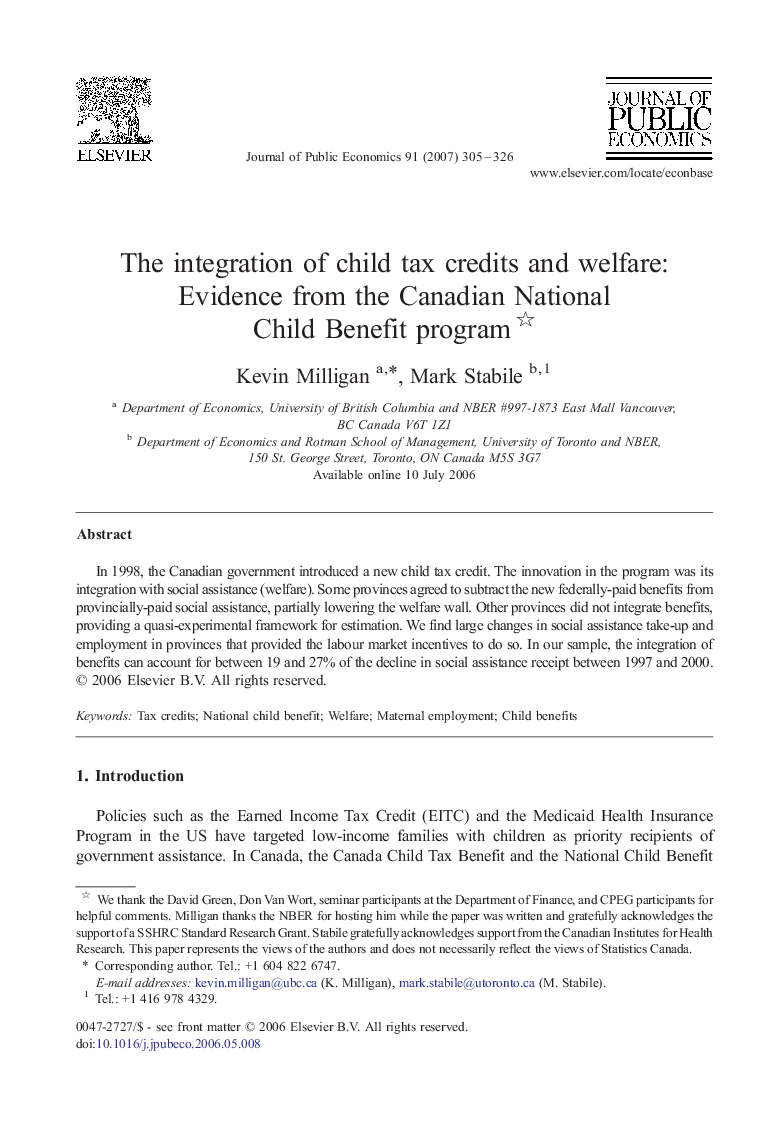| Article ID | Journal | Published Year | Pages | File Type |
|---|---|---|---|---|
| 969550 | Journal of Public Economics | 2007 | 22 Pages |
Abstract
In 1998, the Canadian government introduced a new child tax credit. The innovation in the program was its integration with social assistance (welfare). Some provinces agreed to subtract the new federally-paid benefits from provincially-paid social assistance, partially lowering the welfare wall. Other provinces did not integrate benefits, providing a quasi-experimental framework for estimation. We find large changes in social assistance take-up and employment in provinces that provided the labour market incentives to do so. In our sample, the integration of benefits can account for between 19 and 27% of the decline in social assistance receipt between 1997 and 2000.
Related Topics
Social Sciences and Humanities
Economics, Econometrics and Finance
Economics and Econometrics
Authors
Kevin Milligan, Mark Stabile,
